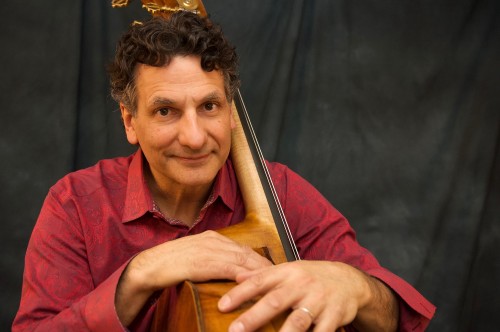Dec 9, 2025 12:28 PM
In Memoriam: Gordon Goodwin, 1954–2025
Gordon Goodwin, an award-winning saxophonist, pianist, bandleader, composer and arranger, died Dec. 8 in Los Angeles.…

John Patitucci says that his latest outing, Soul Of The Bass, is something of a sequel to his 1991 album Heart Of The Bass.
(Photo: Melanie Futorian)At the show, you said that you were glad you had your beautiful 1859 Italian double bass for the performance. And it’s obviously meaningful that there’s a photo of an old acacia tree on the cover of the album. What is your relationship to that bass and the wood it’s made of?
It’s a Gagliano [a renowned Italian family of luthiers], and it was formerly owned by Art Davis, who played it with Coltrane. Interestingly, the bass I used for the record is a copy of the Gagliano, which I didn’t acquire until after I made the record. But the copy is a remarkable bass, and there’s a story behind it.
My old teacher, Chris Poehler, had acquired two of the basses that Davis had used with Trane. One of them was being restored by Lisa Gass, a fine luthier in L.A. She gave some old wood to a talented young bass maker, Trevor Davis, who was working for her, and said, “Why don’t you make a copy of this Gagliano? It would be a great project for you.” He made the copy, and it sounded so good that my teacher said to me, “You should buy this bass.” It’s beautiful. It sounds like an old bass, but it’s only four years old. You’d never know it.
At the release show, you said, “We fall in love with this wood, and we spend the rest of our lives wrestling with it and trying to figure out how to play it.”
Basses are like people—if you don’t play them, they start to fold in on themselves and close up sonically. It’s wild. The whole idea of using a photo of an acacia tree on the cover ... they’re some of the most durable trees in the universe, and they replenish the soil. In the Old Testament, acacia poles were used to carry the Ark of the Covenant.
Another reason I used that acacia tree on the cover: The bass can be looked upon as the soul of the ensemble. It’s the tree that replenishes the music. It’s at the intersection of all the melodies, harmonies and rhythms.
Acacias have been around forever. Just like basses, they outlive the people around them. That Gagliano bass that Art Davis played, I’m gonna play it for a while, and then, when I’m gone, somebody else will play it. The bass will stay. DB

Goodwin was one of the most acclaimed, successful and influential jazz musicians of his generation.
Dec 9, 2025 12:28 PM
Gordon Goodwin, an award-winning saxophonist, pianist, bandleader, composer and arranger, died Dec. 8 in Los Angeles.…

Belá Fleck during an interview with Fredrika Whitfield on CNN.
Jan 13, 2026 2:09 PM
The fallout from the renaming of the John F. Kennedy Center for the Performing Arts to include President Donald…

Flea has returned to his first instrument — the trumpet — and assembled a dream band of jazz musicians to record a new album.
Dec 2, 2025 2:01 AM
After a nearly five-decade career as one of his generation’s defining rock bassists, Flea has returned to his first…

Dec 11, 2025 11:00 AM
DownBeat presents a complete list of the 4-, 4½- and 5-star albums from 2025 in one convenient package. It’s a great…

“It’s a pleasure and an honor to interpret the music of Oscar Peterson in his native city,” said Jim Doxas in regard to celebrating the Canadian legend. “He traveled the world, but never forgot Montreal.”
Nov 18, 2025 12:16 PM
In the pantheon of jazz luminaries, few shine as brightly, or swing as hard, as Oscar Peterson. A century ago, a…